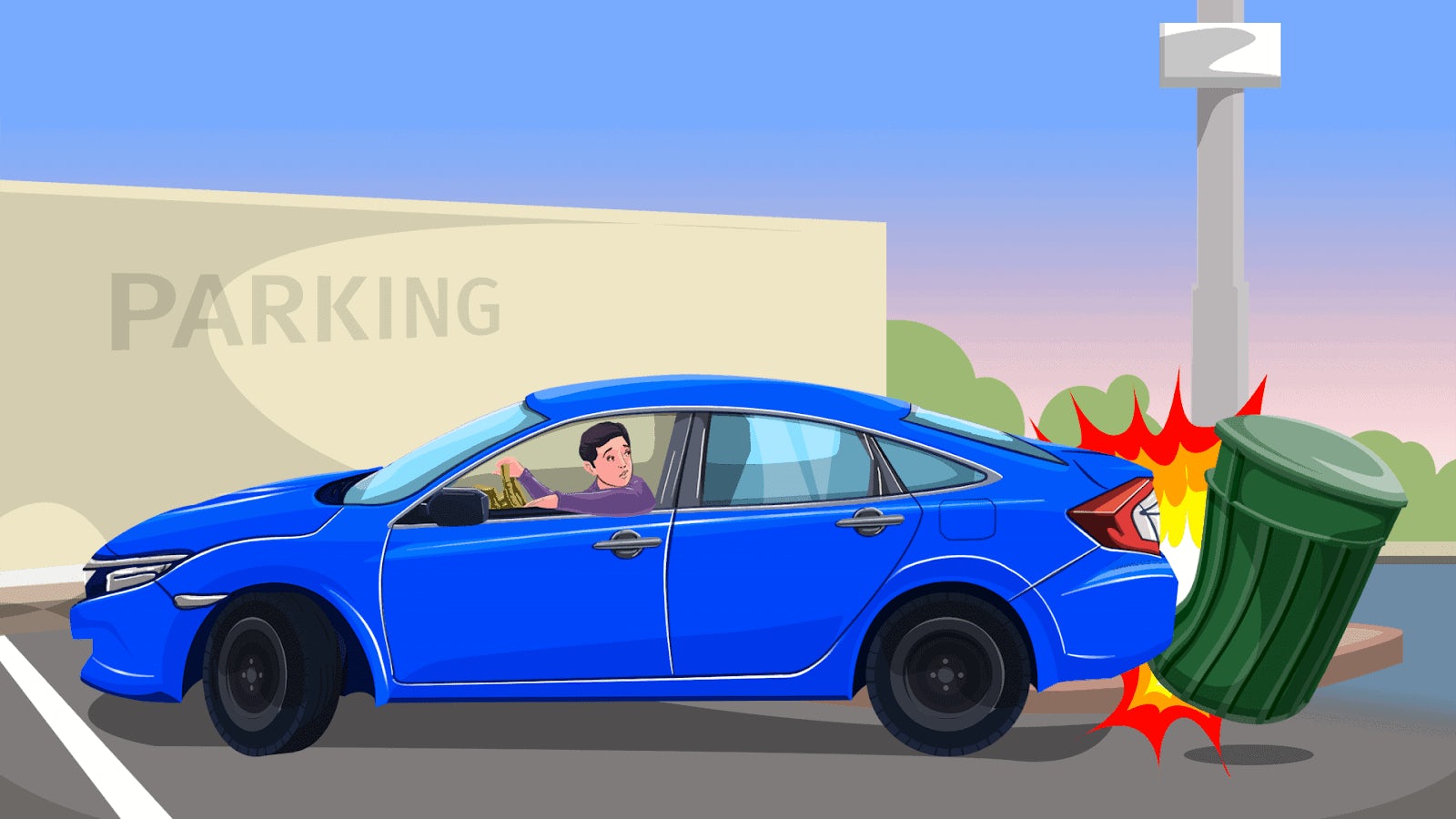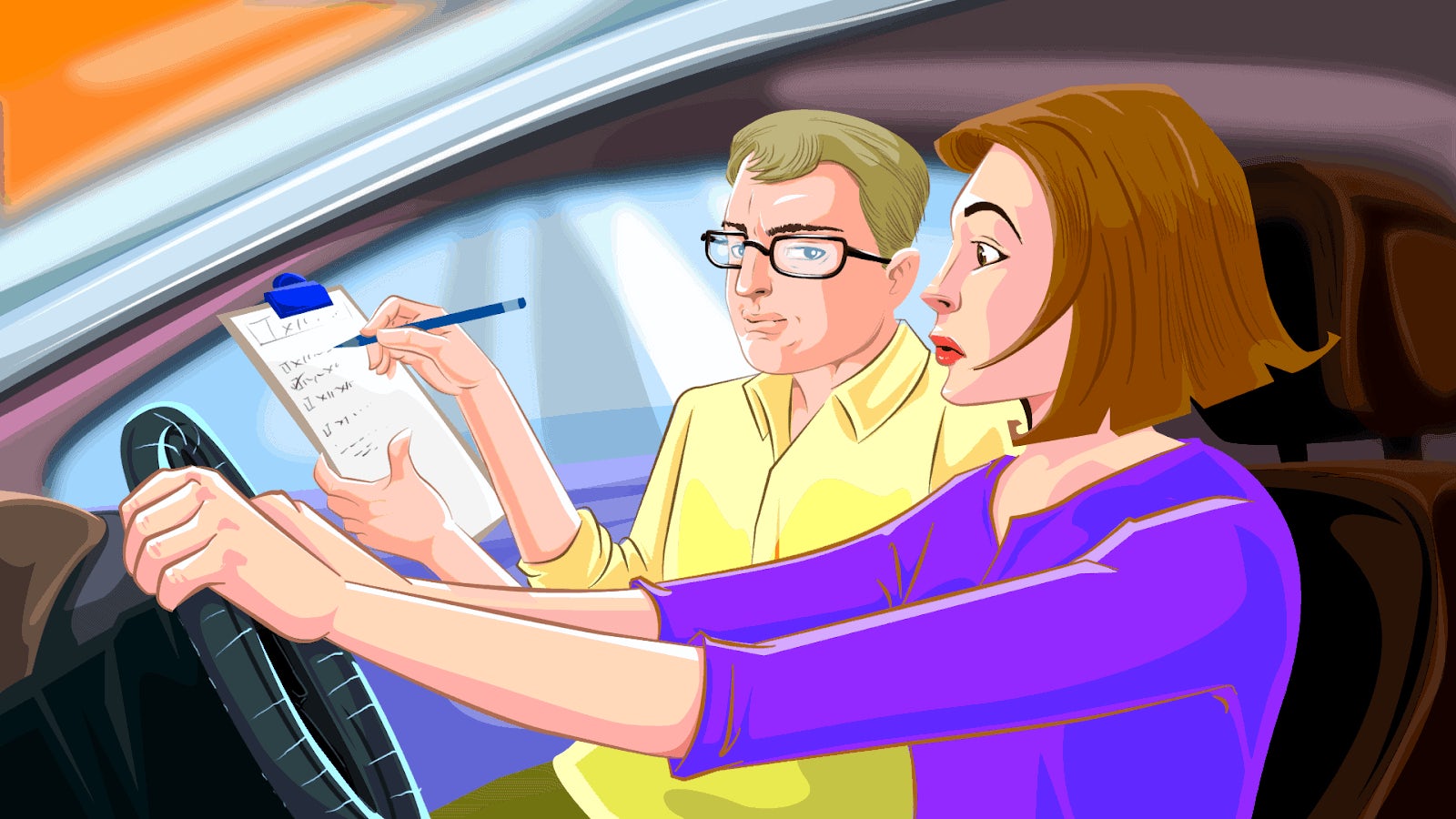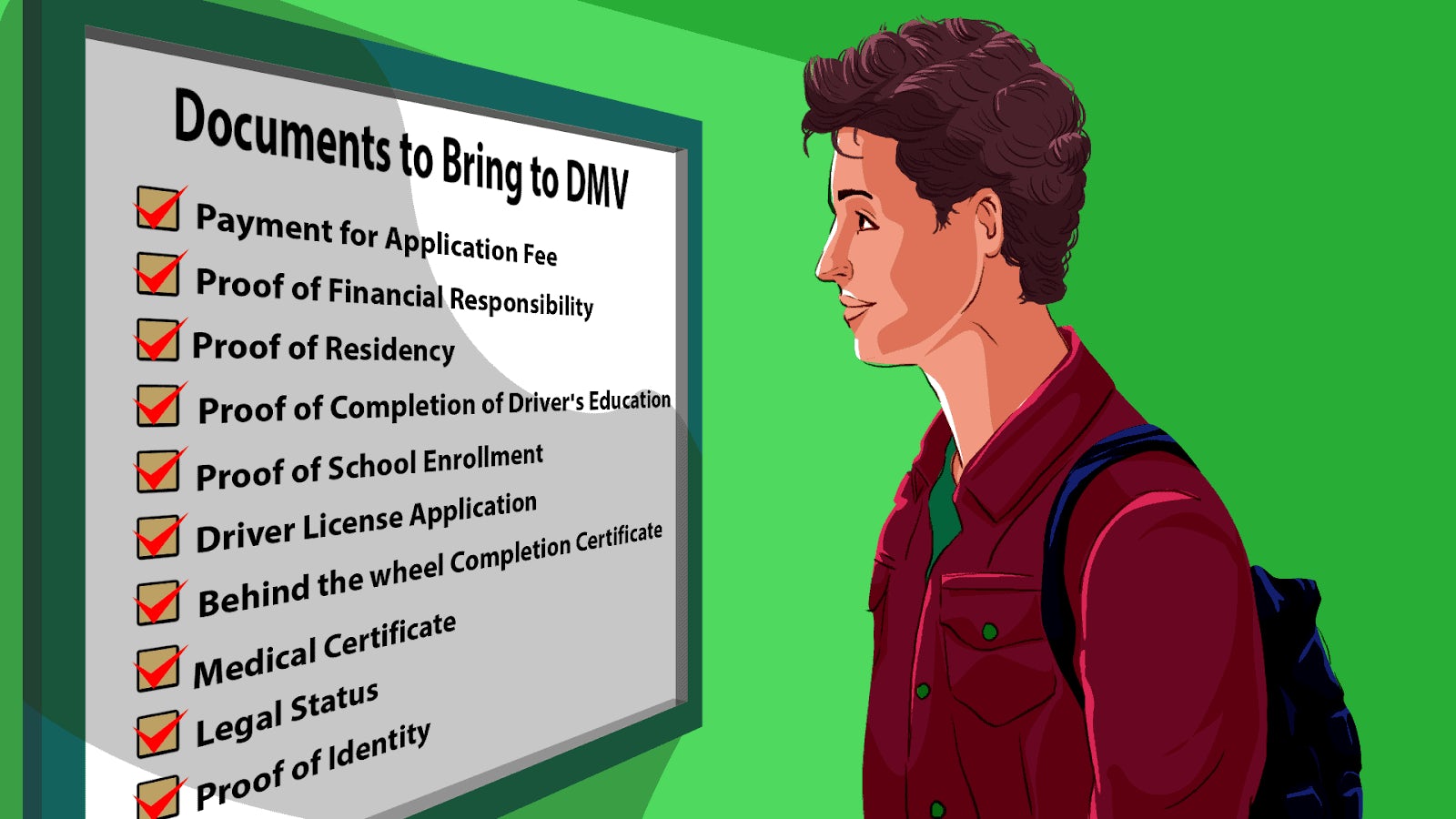
Starting to Drive as a Teen 101 – Learn How To Drive a Car
Learning how to drive is an exciting and important moment in the life of most teens. A driver’s license comes with freedom and independence, but also responsibilities. Each year, there are more than 40,000 fatalities as a result of traffic crashes, and millions of people are injured. It’s vital that you learn how to drive a car correctly and that you learn the rules of the road to not become a statistic.
So, how do you actually get started with driving? Well, there is a lot you need to do and learn. But don’t worry, we’ll go through it all in detail for you.
Getting Started
Before you can even begin to sit behind the wheel, you need to study for the permit test. The reason is that you need a learner’s permit to be qualified to practice driving – without the permit, you won’t be allowed behind the wheel.
As part of studying for your permit, you will need to learn the rules of the road and the intricacies of different traffic situations. If you haven’t yet studied for your permit test, you can prep using our online permit practice tests here.
Learning How to Drive a Car
Once you have your learner’s permit, you will finally be allowed to practice driving for real. The first thing you should do is to learn how to control the car. Take it slow. Get used to the controls, the pedals, how to check and adjust your mirrors, and the size and feel of the car.

Tips When Driving for the First Time
- Choose someone you trust to be your supervising driver. The first time you drive is going to feel very overwhelming and difficult. There is going to be a lot to learn, so make sure your supervising driver is experienced and can help you get through each step in a structured manner. This will help you stay calm and make the first time easier.
- Start out slowly. We advise that you start driving in an empty parking lot so you get a feel of how the car works at a slow speed without other traffic.
- Go through vehicle controls and levers before starting the car. It can be smart to start with the engine off to get a feel for the car and what different controls do. Once you are comfortable, you can begin practicing with the engine on.
- Stick to roads you already know. Try to drive in familiar neighborhoods so you can focus all your attention on driving instead of navigating unfamiliar roads.
- Remove any distractions before starting driving. When you’re just getting behind the wheel for the first time, you need to have full concentration on the task at hand. Make sure to turn off the radio, put away your phone, remove junk from the car, roll up the windows, and limit any other distractions while on the road.
- Don’t drive on busy or high-speed roads. Interstates are generally known to be safer than other types of roads, but they are not the place to be when driving for the first time. As you get more and more comfortable, you can move to roads with more and more traffic. Just remember; moving to a busy street before you are ready is both stressful for you and dangerous for others.
The Zutobi Behind-the-Wheel (BTW) online course offers resources to help new drivers build confidence in a risk-free environment. It includes online lessons with professional instructors who understand driving anxiety, step-by-step guides that break down complex driving tasks, parent training guides for at-home practice, and virtual driving simulations to practice various scenarios before getting on the road.
Behind-the-Wheel Practice
With a permit, you may only drive accompanied by a supervising driver. The supervising driver must be a fully licensed driver, often your parent, guardian, or driving instructor. The supervising driver should teach you about important aspects of driving, such as changing lanes, how to check oil, how to park, and defensive driving.
If you’re about to become a supervising driver for the first time, we recommend that you read through our guide where we go through how to teach someone to drive.

There is a lot you need to think about when learning to drive, such as:
- What is a suitable speed for the conditions? You may be ticketed for driving “too fast for the conditions” even when you are driving slower than the speed limit. When you are new to driving, you should be especially careful as you lack experience.
- Understand the basics of owning a car. For example; you may need to change a tire, pump gas, add fluids to the car. Modern cars use dashboard lights to indicate when something needs attention, so learn the dashboard lights!
- When is changing lanes safe? Ask your supervising driver and practice it!
- How do you reverse and when is it suitable? Avoid reversing on any roads where you cannot see clearly in both directions.
- How do you park? What’s a suitable size for a parking spot, and how do you perform the maneuver?
- How do you drive defensively, and what does it mean?
- Properly adjusting the car seat, mirrors, and steering wheel.
While these are just a few examples of the stuff you need to learn, it serves to show that there is a lot. We strongly encourage you to take lessons with a driving instructor in addition to the practice sessions with your parents or guardians. You can also read the DMV manual or take a prep course to prepare yourself.
Why Should You Practice Driving With a Driving Instructor?
A driving instructor will be able to help you learn to drive properly and adjust what you do incorrectly. It’s especially important to take a few lessons with a driving instructor every few weeks or so if your supervising driver has had their driver’s license for a long time.
Why? Driving instructors are very skilled at teaching new drivers how to drive a car correctly, and know the common mistakes that beginners often make and how to correct them. Parents or guardians, on the other hand, may have forgotten the basics a long time ago.
Practice, Practice, Practice
Log as many hours as you can behind the wheel before taking the road test. In some states, you’ll need to log a mandatory 50-100 hours before you are allowed to take the test. Consider that to be the minimum amount of hours you should practice behind the wheel, not the recommended amount.
Learning to drive a car takes time – you don’t just become a good driver overnight, you learn it through practicing behind the wheel for many hours.
Getting Your License
After you have completed the permit test and done your fair share of behind-the-wheel practice, you are ready for the road test.
Behind-the-Wheel Road Test

The last hurdle to overcome before getting a driver’s license is the behind-the-wheel driving test. The driving test is meant to test if you are ready for solo driving by having you drive with a driving examiner in the passenger seat. To prevent unsafe or bad drivers from getting a driver’s license, even small errors on the drivers test can lead to a failing grade.
It’s understandable to want to complete the behind-the-wheel test as early as possible, but taking the test before you are ready will inevitably lead to a failing grade. In fact, the most common mistake according to instructors is taking the test too early.
If you want to know more about the test, you can read How to Pass Your Driving Test (Behind-the-Wheel Exam).
What to Bring to the DMV?
You don’t want to show up to the driving test without the proper documentation as you won’t be allowed to take the test. So, what do you actually need to bring to the test? Well… that depends on the state you live in, the type of license you intend to get, and several other factors.

For example; you need to bring proof of identity, proof of residency, proof of financial responsibility, proof of completion of driver’s education (depending on state and age!), and much more.
How Old Do You Have to Be?
These are the age restrictions for getting a learners/driver’s permit, provisional license, and full driver’s license for all U.S. states.
| State | Driver’s Permit Age | Provisional License Age | Full License Age |
| Alabama | 15 | 16 | 17 |
| Alaska | 14 | 16 | 16 ½ |
| Arizona | 15 ½ | 16 | 16 ½ |
| Arkansas | 14 | 16 | 18 |
| California | 15 ½ | 16 | 17 |
| Colorado | 15 | 16 | 17 |
| Connecticut | 16 | 16 ⅓ | 18 |
| Delaware | 16 | 16 ½ | 17 |
| District of Columbia | 16 | 16 ½ | 18 |
| Florida | 15 | 16 | 18 |
| Georgia | 15 | 16 | 18 |
| Hawaii | 15 ½ | 16 | 17 |
| Idaho | 14 ½ | 16 | 17 |
| Illinois | 15 | 16 | 18 |
| Indiana | 15 | 16 ½ | 18 |
| Iowa | 14 | 16 | 17 |
| Kansas | 14 | 16 | 16 ½ |
| Kentucky | 16 | 16 ½ | 17 |
| Louisiana | 15 | 16 | 17 |
| Maine | 15 | 16 | 16 ¾ |
| Maryland | 15 ¾ | 16 ½ | 18 |
| Massachusetts | 16 | 16 ½ | 18 |
| Michigan | 14 ¾ | 16 | 17 |
| Minnesota | 15 | 16 | 17 |
| Mississippi | 15 | 16 | 16 ½ |
| Missouri | 15 | 16 | 18 |
| Montana | 14 ½ | 15 | 16 |
| Nebraska | 15 | 16 | 17 |
| Nevada | 15 ½ | 16 | 18 |
| New Hampshire | 15 ½ | 16 | 18 |
| New Jersey | 16 | 17 | 18 |
| New Mexico | 15 | 15 ½ | 16 ½ |
| New York | 16 | 16 ½ | 18 (can be lowered to 17 by attending classes) |
| North Carolina | 15 | 16 | 16 ½ |
| North Dakota | 14 | 15 | 16 |
| Ohio | 15 ½ | 16 | 18 |
| Oklahoma | 15 ½ | 16 | 16 ½ |
| Oregon | 15 | 16 | 17 |
| Pennsylvania | 16 | 16 ½ | 18 (can be lowered to 17 by attending classes) |
| Rhode Island | 16 | 16 ½ | 17 ½ |
| South Carolina | 15 | 15 ½ | 16 ½ |
| South Dakota | 14 | 14 ½ | 16 |
| Tennessee | 15 | 16 | 17 |
| Texas | 15 | 16 | 18 |
| Utah | 15 | 16 | 17 |
| Vermont | 15 | 16 | 16 ½ |
| Virginia | 15 ½ | 16 ¼ | 18 |
| Washington | 15 | 16 | 17 |
| West Virginia | 15 | 16 | 17 |
| Wisconsin | 15 ½ | 16 | 16 ¾ |
| Wyoming | 15 | 16 | 16 ½ |
That’s It!
That’s everything you need to know about learning how to drive as a new driver. If you need any help studying for your upcoming exams, then you’ve come to the right place. With over 250,000 monthly users, Zutobi has become one of the most popular ways of studying for the DMV exam. If you’re looking for resources to help behind the wheel, we’ve got that as well!

Avoid beginner mistakes with expert advice
Build road test confidence and reduce anxiety
Make at-home lessons a success with our parent guide
Recommended articles
Ace your DMV test, guaranteed
Want to Be the Top School in Your Area?
- Simple & automated admin
- More time for teaching
- #1 learning materials for students


